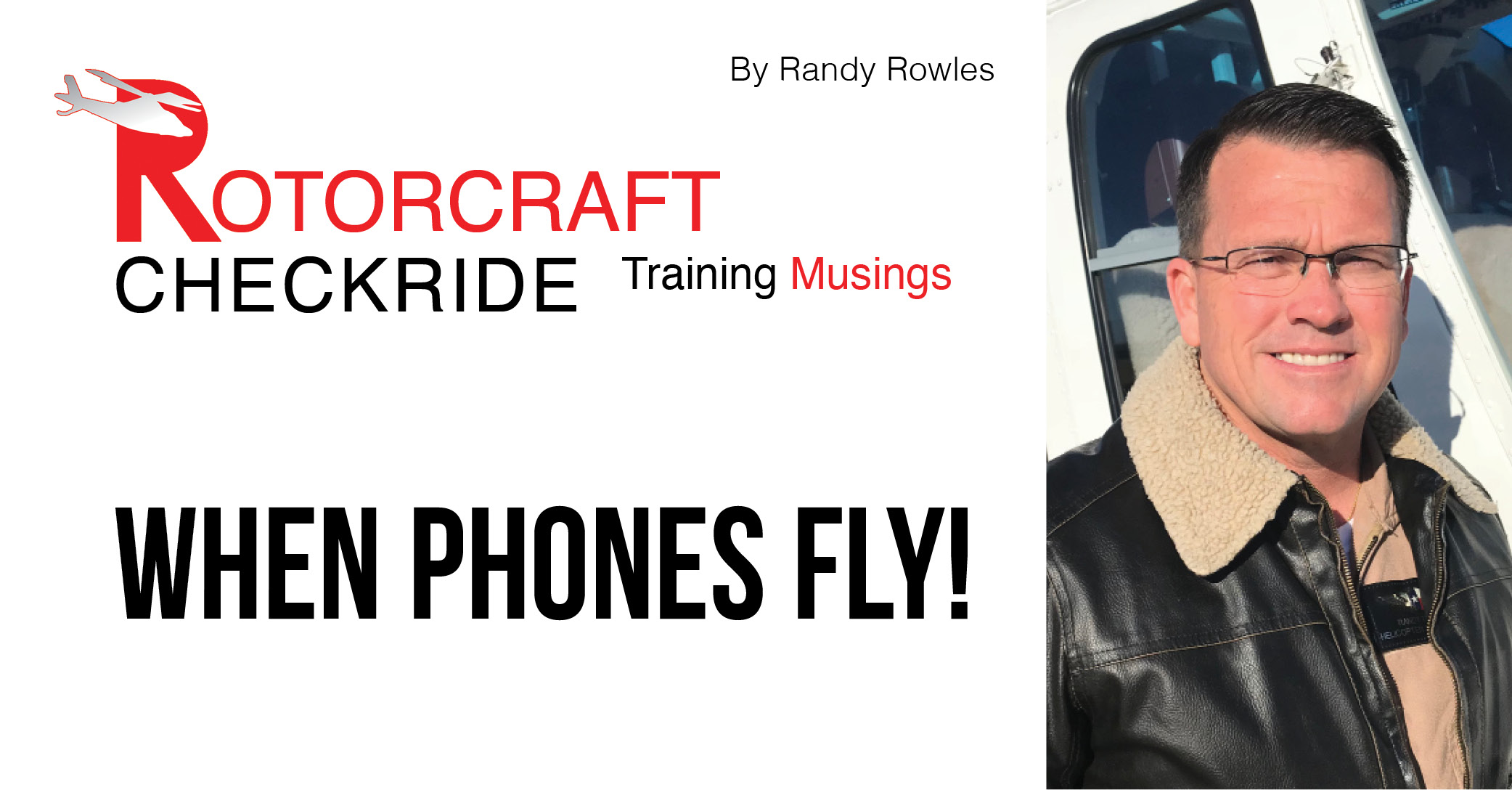|
Dec
27
2021
|
|
Posted 3 years 355 days ago ago by Admin
|
|

Recently, I was conducting an FAA Helicopter Instrument Rating practical test in a Robinson R22 aircraft. To follow along with the applicant during the flight, I often use a commercially available navigation app on my smartphone to follow along for my own situational awareness. The fact this action is so commonplace in our lives can cause momentary complacency on properly securing the device for flight.
On this flight, we completed the preflight briefing and outline of the flight profile using my Plan of Action. The applicant conducted a preflight of the helicopter and briefed me on the safety aspects of the flight as a passenger. (That briefing was really impressive.) I often board the aircraft after applicants to allow them room to organize the cockpit with all the items they may need for the flight.
Since I was going to use my smartphone during the flight, I placed it under the collective as a holding spot until I was secured in my seat. The configuration of the aircraft was right door on, left door off. This configuration provides reduced wind in the cockpit, a place for the pilot to store documents they may need within their door pocket and allow a bit of room in the cockpit for me to lean out of their way while conducting required flight items. Additionally, having one door off makes the flight more enjoyable as the airflow cools the cockpit.
Once seated, I began observing the applicant conduct checklist exercises to verify currency on navigation databases. I completely forgot my smart phone was under the collective!
The applicant had a copy of the required approach plates, so I had them in my hand and didn’t need my phone, which drew my attention away from its location. Upon completion of the third and final approach, we returned to the ramp and began the shut-down checklist. As I often do, I requested permission to exit the aircraft and stand beside the ship at my door. As I exited, I looked down at the collective to see no phone and immediately realized what I had done.
My initial thought was my wife wouldn’t be very happy at my losing my third phone over the years. My next thought was the tail rotor location on the aircraft, and I began to visualize the phone nearly missing the tail rotor as it fell to the ground. Then, most importantly, had I hurt someone on the ground due to my own complacency? Using a built-in app on the phone, we were able to see the phone was in an area where people wouldn’t have access, so it was very unlikely to have caused any harm.
As the industry becomes more and more dependent upon smartphones and other hand-held navigation sources, we must equally ensure that those pieces of equipment are properly secured in the cockpit not only to prevent unscheduled departure of the equipment, but also because having a heavy, sharp piece of equipment floating around in the cockpit can kill you!
The loss of my phone was a financial lesson, but the thought that I could have taken down our aircraft or worse, seriously injured someone on the ground almost made me sick to my stomach. Telling my wife I lost another phone is another story!
About Randy:
Randy Rowles has been a FAA pilot examiner for 20 years for all helicopter certificates and ratings. He holds a FAA Gold Seal Flight Instructor Certificate, NAFI Master Flight Instructor designation, and was the 2013 recipient of the HAI Flight Instructor of the Year Award. Rowles is the owner/president of Helicopter Institute.
Visit Helicopter Institute's website for more information
Website: www.helicopterinstitute.com
YouTube Channel: https://www.youtube.com/channel/UCt4y..